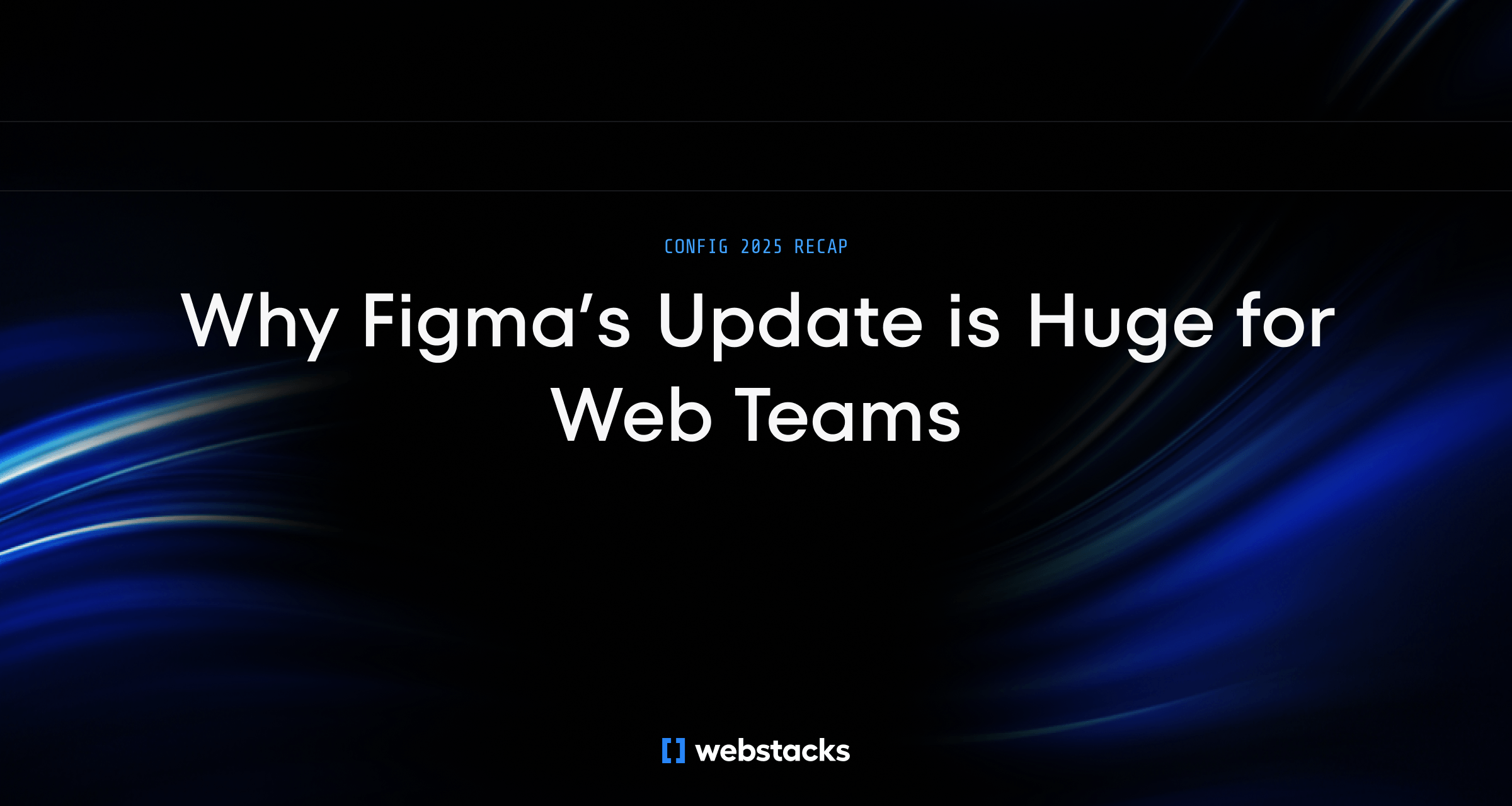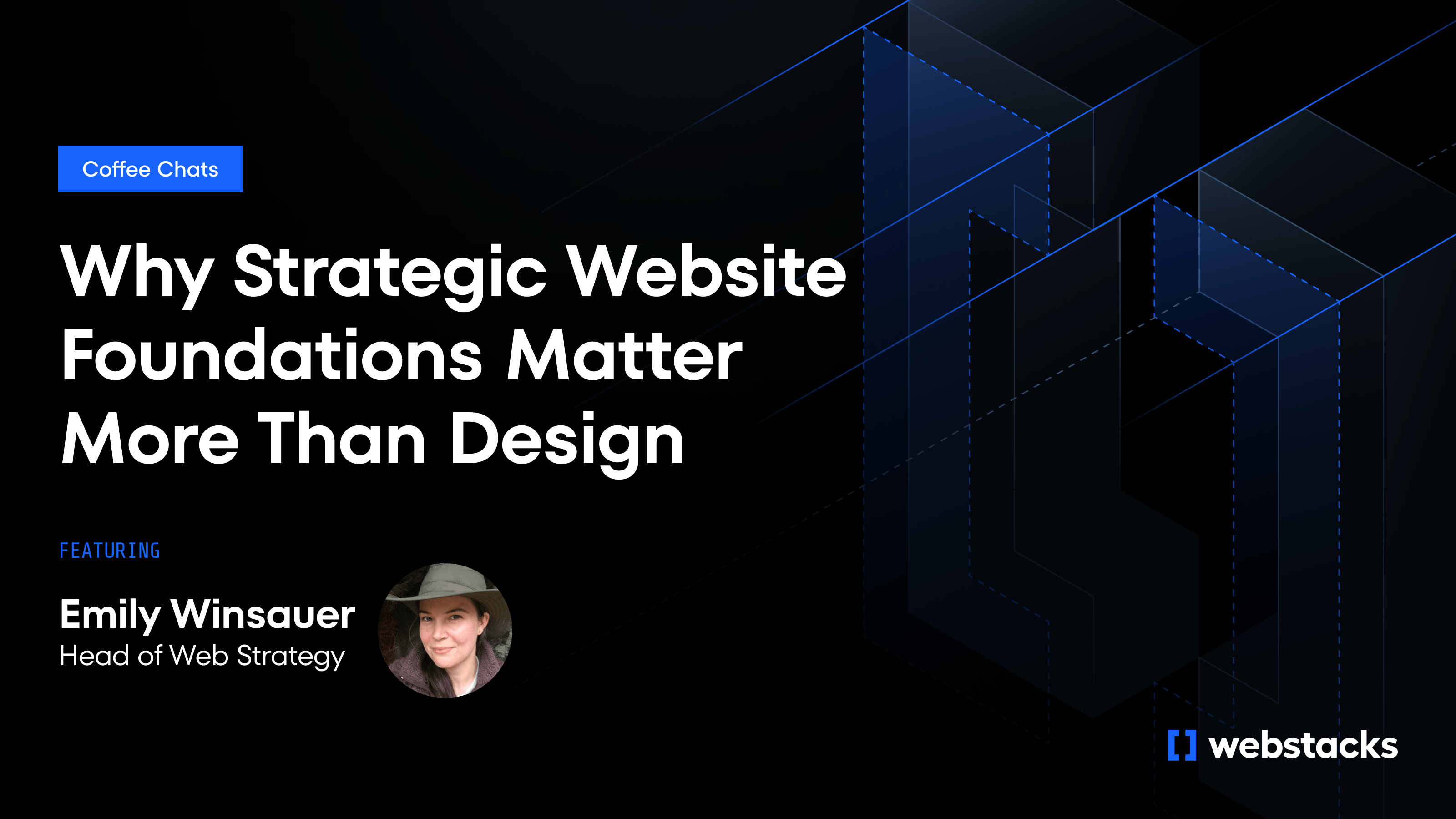At Config 2025, Figma announced a sweeping expansion of its design platform, adding new capabilities that go far beyond static design. The standout? Figma Sites, a fully integrated site builder that turns mockups into live, responsive websites. Paired with new animation tooling and AI-generated Tailwind + React code, it’s clear that Figma is no longer just a design tool. They’re on a mission to topple legacy platforms and become the connective layer across design, product, and engineering.
At Webstacks, we’re fired up about what this means for the future of digital design. This evolution in Figma’s platform aligns with the way we work: fast-moving, design-forward, and deeply collaborative. We see huge potential to elevate our workflows and deliver even more innovative websites for the fastest-growing brands in B2B tech.
Here’s our take on what’s brand new, and why these updates matter.
Figma Sites: A Site Builder That Brings Design Closer to Production
Figma Sites is the headline launch (and for good reason).
This new tool allows designers to go beyond prototyping and actually publish live websites directly from the canvas. You can copy and paste existing designs from Figma, use one of 50 pre-built templates, and pull in assets and components from your design system. With support for responsive breakpoints, scroll interactions, and live previews, it’s a huge leap toward faster iteration and production-ready output.
For our team at Webstacks, this means more than just convenience. It opens up major new possibilities, including:
- Building early prototypes that look and behave like the real thing — giving clients a better sense of direction, faster.
- Reducing friction between design and development by producing layouts that already align with the end-state code.Speeding up internal site experiments, vignette concepts, or even MVP builds (especially for fast-paced marketing teams).
And because Figma Sites offers real web hosting, designers can publish live, interactive versions of their work without waiting on developers. It removes a major blocker in the early stages of design—getting work in front of stakeholders, in context, fast.
Smarter Handoff: From Design to Tailwind + React Code with Figma Make
Alongside Figma Sites, another feature quietly shook the room: Figma Make, a prompt-based AI tool that turns static designs into functional code including responsive Tailwind CSS and React components.
Here’s how it works:
- Paste a frame from your Figma design
- Type a prompt (e.g., "turn this into a hero section with responsive layout and dark mode")
- Instantly get editable, production-ready code
For our development team, this has massive potential. It’s a step toward bridging the long-standing design-to-dev gap. Instead of translating mockups into specs, then into code, we’re looking at a future where designers and developers are literally speaking the same language, faster.
It also lets us accelerate component development for design systems, validate concepts with a working UI quicker, and eliminate ambiguity in handoff and reduce rework.
At Webstacks, our devs already operate in a component-first mindset. Figma Make fits right into that paradigm and could help us shorten feedback loops, especially on fast-moving client builds.
Native Motion and Interactions: Our Vignette Process Gets a Boost!
Figma’s updates also include a suite of built-in motion and interaction tools: marquee text, scroll-triggered parallax, hover states, and more — all with just a few clicks, no plugins or external tooling required.
For a team like ours, this is going to level up one of our most important design deliverables: the vignette.
Vignettes are a core part of our discovery process. They’re speedy, focused mockups that help us explore brand identity, visual style, and layout direction early in a project. Until now, vignettes have been largely static, which sometimes made it difficult for clients to fully grasp the interactive intent.
With Figma’s new motion capabilities:
- Our vignettes can now convey movement, tone, and rhythm — elements that are crucial to brand storytelling
- We can prototype scroll experiences, transitions, and hero animations natively, without needing high-effort After Effects videos or coded prototypes
- Design feedback will become more meaningful because clients can interact with the work, not just look at it
The result? A more rapid, immersive discovery phase that enables stronger alignment from the start.
A Turning Point for Modern Web Teams
Config 2025 was a landmark moment. The scale of what Figma introduced this year redefines what design tools can do.
From our perspective on the front lines of web design and development, here’s what these updates signal:
- Designers and developers will increasingly share the same workspace — literally and functionally
- Prompt-based workflows are becoming real — not just gimmicks, but powerful tools for rapid iteration
- Clients are expecting more — more polish, more interactivity, and faster delivery
Figma’s evolution is a clear response to those pressures. And at Webstacks, we’re all-in on embracing the change.
What’s Next for Webstacks and Figma Sites?
We’re already experimenting with Figma Sites and exploring how it could complement our headless CMS workflows, support faster internal prototyping, and unlock better collaboration between our design and dev teams.
We’ll be sharing what we learn from our Head of Design, and maybe even publishing a few public experiments to showcase what’s possible.
If you’re building a brand-first, high-performance web experience and want to push the envelope, make sure you follow along. The future of our favorite design tool couldn’t be any brighter 🚀🚀🚀.




